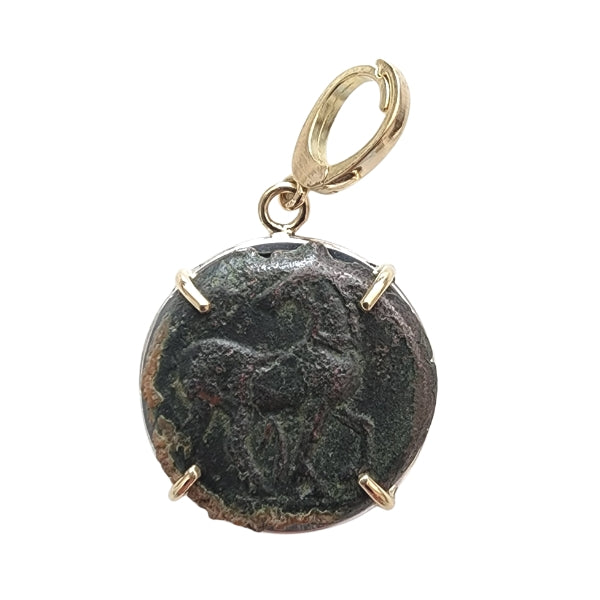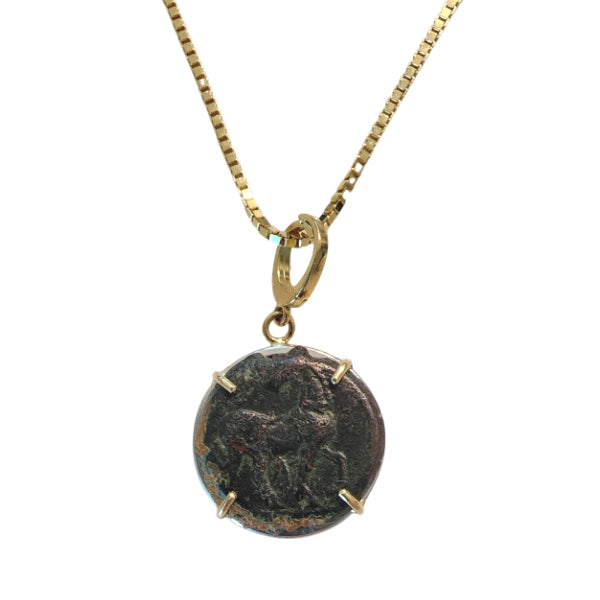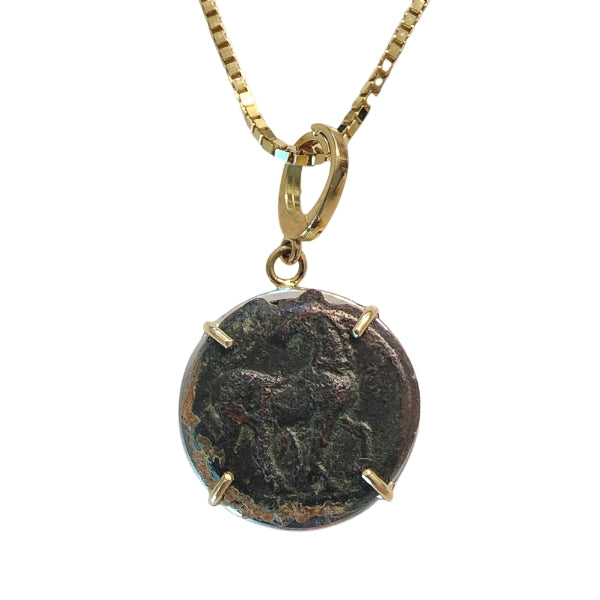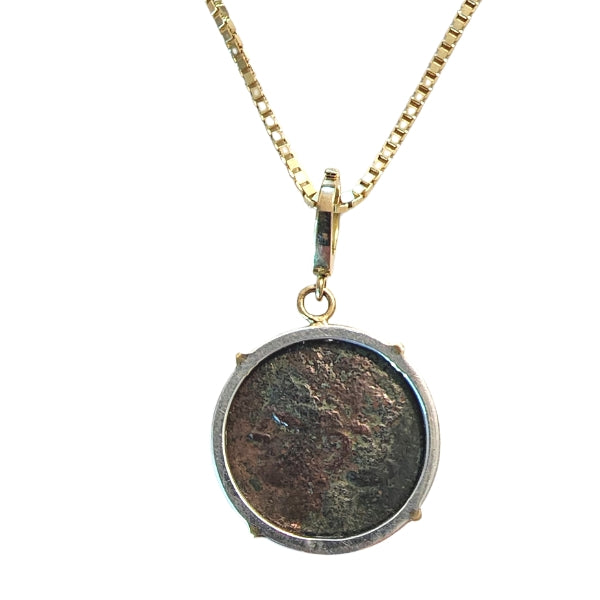




Greek Bronze Carthage Zeugitana Horse 215-201 BC (118)
This ancient Greek bronze coin features an image of a long-necked horse looking back over its shoulder. The reverse side of the pendant is a lovely rendering of the goddess Tanit, wearing a wreath of leaves.
The coin's dark bronze patina and raw edge create a distinctive stone-like texture.
Size: 21mm
Hand-fabricated using 18kt recycled gold and sterling silver.
18kt gold enhancer bail.
One of a kind with a Certificate of Authenticity.
Chain not included; available separately. See Chains
Dated: 215-201 BC
Carthage, near modern Tunisia, was founded in c. 814 BC by Dido, sister of King Pygmalion of Tyre. With its superior location near the sea, the Carthaginians expanded their Western Mediterranean trading empire to include Sicily. Curiously, the Carthaginians didn't begin to issue coined money prior to their second invasion of Sicily in 409 BC. The style of artwork indicates that Greek artists were employed in the Carthaginian mints.
Tanit was the chief goddess of Carthage, equivalent to Astarte. She was a mother goddess and a goddess of war, and fertility symbols often accompany representations of her.
Choose options





This ancient Greek bronze coin features an image of a long-necked horse looking back over its shoulder. The reverse side of the pendant is a lovely rendering of the goddess Tanit, wearing a wreath of leaves.
The coin's dark bronze patina and raw edge create a distinctive stone-like texture.
Size: 21mm
Hand-fabricated using 18kt recycled gold and sterling silver.
18kt gold enhancer bail.
One of a kind with a Certificate of Authenticity.
Chain not included; available separately. See Chains
Dated: 215-201 BC
Carthage, near modern Tunisia, was founded in c. 814 BC by Dido, sister of King Pygmalion of Tyre. With its superior location near the sea, the Carthaginians expanded their Western Mediterranean trading empire to include Sicily. Curiously, the Carthaginians didn't begin to issue coined money prior to their second invasion of Sicily in 409 BC. The style of artwork indicates that Greek artists were employed in the Carthaginian mints.
Tanit was the chief goddess of Carthage, equivalent to Astarte. She was a mother goddess and a goddess of war, and fertility symbols often accompany representations of her.
